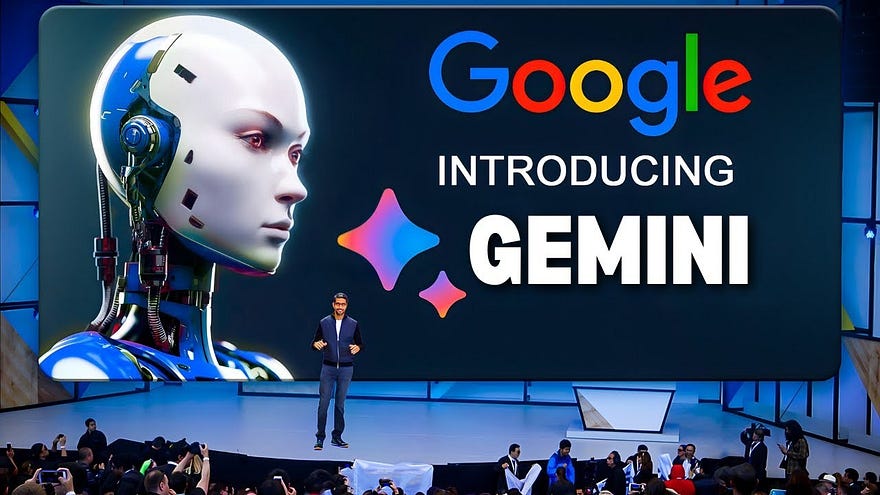Introducing the Google AI Dart SDK
We’re thrilled to announce the launch of the Google AI Dart SDK for the Gemini API. The new pub.dev package, google_generative_ai, and supporting resources enable you to build your own generative AI-based features into Dart and Flutter apps through an idiomatic Dart integration with the Gemini API. It opens the door to a vast range of possibilities for building intelligent, performant applications for Android, iOS, web, macOS, Windows, and Linux from a single code base.
With the Google AI Dart SDK, you can:
- Easily integrate generative AI features: Add advanced text generation, summarization, chat, and more to your Dart or Flutter apps with minimal setup.
- Tap into Google’s most capable and general model yet: The Gemini model draws on Google’s extensive research and development in machine learning, giving you access to generative AI capabilities that will continue to improve.
- Accelerate your AI-powered app development: Focus on your app logic and user experience, while the SDK handles the intricacies of interacting with AI models.
- Build cross-platform AI-powered apps: Easily create generative AI features across desktop, web, and mobile applications using Flutter.
- Use the Gemini API in more than 180+ countries and territories: Check the available regions for the most current list of countries and regions where the Gemini API and Google AI Studio (described further below) are available.
What can you build?
We believe generative AI holds immense potential to help you achieve your app and business goals. And since the Gemini model is multimodal (it’s capable of processing information from multiple modalities, including images and text), it empowers you to be extremely creative. However, the first question we often get from app developers — and even from within our own team — is “What can I actually do with the Gemini API?” Here are a few examples of features you might create for your Dart or Flutter app:
- Text summarization: Generate concise summaries of long articles, research papers, or website content from textual input.
- Smart chatbots: Build more engaging and human-like conversational interfaces, enhancing user experience in your applications.
- Visual search engine: Users can upload an image, and the app uses the Gemini API to return descriptions of what’s in the image, the style, and perhaps even how to make what’s in the image.
- Image descriptions for accessibility: Generate detailed text descriptions of uploaded images to aid users who are visually impaired.
- Diagram & chart interpretation: Users can upload images of diagrams, charts, or graphs, and the Gemini API delivers a text-based analysis and explanation of the data.
This list could go on because the possibilities are nearly endless!

A screenshot of the Flutter sample app that uses the Google AI Dart SDK
Getting Started
Check out the Dart quickstart for a detailed step-by-step guide on how to get set up. At a high level, here’s what you’ll do:
- Get a Gemini API key from Google AI Studio. Keep this key secure. We strongly recommend that you do not include the key directly in your code, or check files that contain the key into version control systems. While developing, we recommend using
flutter run -d [DEVICE NAME] — dart-define=API_KEY=[YOUR API KEY]to run the app in an emulator/simulator, using your API key as an environment variable. - Add the Google AI Dart SDK to your Dart or Flutter app by running
dart pub add google_generative_aiorflutter pub add google_generative_ai, respectively. This addsgoogle_generative_aias a dependency to your `pubspec.yaml` file. - Initialize the generative model in your code:
import 'package:google_generative_ai/google_generative_ai.dart';// Access your API key as an environment variable (see first step above)
final apiKey = Platform.environment['API_KEY'];
if (apiKey == null) {
print('No \$API_KEY environment variable');
exit(1);
}final model = GenerativeModel(model: 'MODEL_NAME', apiKey: apiKey);
4. You can now start to explore using the Gemini API to implement different use cases. For example, when the prompt input includes both text and images, use the gemini-pro-vision model and the generateContent method to generate text output:
import 'dart:io';import 'package:google_generative_ai/google_generative_ai.dart';
void main() async {
// Access your API key as an environment variable (see first step above)
final apiKey = Platform.environment['API_KEY'];
if (apiKey == null) {
print('No \$API_KEY environment variable');
exit(1);
}
// For text-and-image input (multimodal), use the gemini-pro-vision model
final model = GenerativeModel(model: 'gemini-pro-vision', apiKey: apiKey);
final (firstImage, secondImage) = await (
File('image0.jpg').readAsBytes(),
File('image1.jpg').readAsBytes()
).wait;
final prompt = TextPart("What's different between these pictures?");
final imageParts = [
DataPart('image/jpeg', firstImage),
DataPart('image/jpeg', secondImage),
];
final response = await model.generateContent([
Content.multi([prompt, ...imageParts])
]);
print(response.text);
}Explore the Gemini API documentation and check out the Dart and Flutter sample apps in the GitHub repo for detailed guides and examples on how to use the SDK for various use cases, or in this sample app in DartPad, which is a free, open-source online editor for Dart and Flutter snippets, now built with Flutter. Please report any issues or tell us about feature requests in the generative-ai-dart GitHub repo.
Google AI Studio
Alongside the SDK, Google AI Studio is a browser-based IDE for prototyping with generative models. It enables you to quickly iterate to develop prompts for your use case, and then get an API key to use in your app development. You can sign into Google AI Studio with your Google account and take advantage of the free quota, which allows 60 requests per minute. To help us improve product quality, when you use the free quota, your Google AI Studio input and output might be accessible to trained reviewers. This data is de-identified from your Google account and API key.
We will add Dart to Google AI Studio soon, so keep a lookout for the announcement! This will enable you to simply click on “Get code”, select a new Dart tab (which will be alongside the existing supported languages), and then “Copy” the Dart code to transfer your work to your IDE of choice.

Google AI Studio
Share what you build!
We look forward to seeing what you’ll build with Gemini, like the team at TechDotBit who have used the Gemini API to build arb_translate. It’s a package that helps developers to perform language translation automatically, streamlining localization in Flutter apps.
Use the hashtag #BuildWithGemini on Twitter/X to let us know what you’re building!
For those seeking to integrate Google’s Gemini API into Flutter apps, the documentation provides a comprehensive guide to get started. The Gemini API supports various programming languages, including Dart, which is the primary language for Flutter development. The provided code snippets in the documentation show how to create a GenerativeModel instance, configure it with the gemini-pro-vision model, and then use it to generate content based on both text and image inputs. This process involves creating content objects that include both text parts and data parts (for images), and then passing these to the generateContent method of the model to obtain a response.
The Gemini API documentation further elaborates on building with the API across different platforms such as Python, Android, Dart (Flutter), Go, Node.js, Swift, and the Web, making it versatile for various application needs. It provides examples of generating content with the gemini-pro-vision model, showcasing its capability to process and understand both text and image inputs.
For detailed guidance and examples across different programming languages, including Dart for Flutter, the Gemini Docs and API Reference is an essential resource. It contains quickstart guides, model overviews, safety settings, and much more to help developers effectively use the Gemini API in their projects.
To explore more about the Gemini API and access full examples and documentation, you can visit the official Google AI Developers site at https://ai.google.dev/docs.







